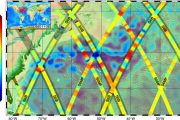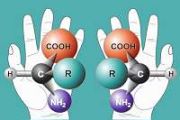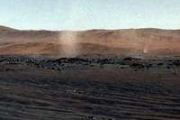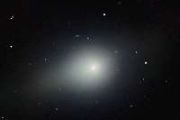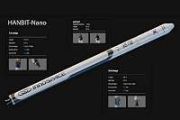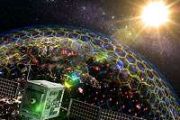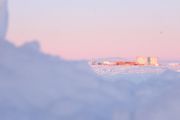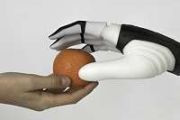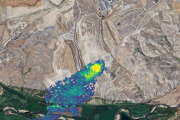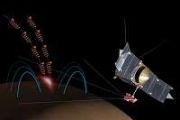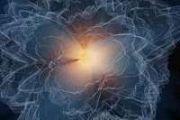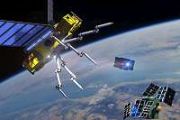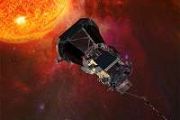
Copernical Team
New approach improves models of atmosphere on early Earth, exo-planets
 As energy from the sun reaches Earth, some solar radiation is absorbed by the atmosphere, leading to chemical reactions like the formation of ozone and the breakup of gas molecules. A new approach for modeling these reactions, developed by a team led by scientists at Penn State, may improve our understanding of the atmosphere on early Earth and help in the search for habitable conditions on plan
As energy from the sun reaches Earth, some solar radiation is absorbed by the atmosphere, leading to chemical reactions like the formation of ozone and the breakup of gas molecules. A new approach for modeling these reactions, developed by a team led by scientists at Penn State, may improve our understanding of the atmosphere on early Earth and help in the search for habitable conditions on plan TBIRD technology could help image black holes' photon rings
 In April 2019, a group of astronomers from around the globe stunned the world when they revealed the first image of a black hole - the monstrous accumulation of collapsed stars and gas that lets nothing escape, not even light. The image, which was of the black hole that sits at the core of a galaxy called Messier 87 (M87), revealed glowing gas around the center of the black hole. In March 2021,
In April 2019, a group of astronomers from around the globe stunned the world when they revealed the first image of a black hole - the monstrous accumulation of collapsed stars and gas that lets nothing escape, not even light. The image, which was of the black hole that sits at the core of a galaxy called Messier 87 (M87), revealed glowing gas around the center of the black hole. In March 2021, New map of Orientale basin may guide lunar sample missions
 Billions of years in the past, an asteroid of immense size collided with the Moon, generating such intense heat that the lunar rock melted and glowed white-hot before eventually solidifying. This formed the multi-ringed Orientale basin, a major impact feature on the Moon's surface.
Acquiring samples of such impact melt is of great value to scientists, who can analyze them in laboratories t
Billions of years in the past, an asteroid of immense size collided with the Moon, generating such intense heat that the lunar rock melted and glowed white-hot before eventually solidifying. This formed the multi-ringed Orientale basin, a major impact feature on the Moon's surface.
Acquiring samples of such impact melt is of great value to scientists, who can analyze them in laboratories t USF research delves into volcanic caves for Mars life insights
 An international research team, led by Bogdan P. Onac from the USF School of Geosciences, has conducted an in-depth study of volcanic caves called lava tubes. This investigation sheds light on how such structures may offer valuable insights for detecting life on Mars.
The team, including experts from Portugal, Spain, and Italy, focused on six lava tubes on Lanzarote, a Spanish island near
An international research team, led by Bogdan P. Onac from the USF School of Geosciences, has conducted an in-depth study of volcanic caves called lava tubes. This investigation sheds light on how such structures may offer valuable insights for detecting life on Mars.
The team, including experts from Portugal, Spain, and Italy, focused on six lava tubes on Lanzarote, a Spanish island near AnalySwift aims to transform spacecraft for secondary uses during extended missions
 AnalySwift LLC, a Purdue University-affiliated company, has received a Phase I STTR (Small Business Technology Transfer) contract from NASA worth $156,424.
Allan Wood, AnalySwift president and CEO, said the contract will fund two advancements: processes and hardware to disassemble spacecraft components and reassemble them for a secondary use, and software for multiphysics simulation and an
AnalySwift LLC, a Purdue University-affiliated company, has received a Phase I STTR (Small Business Technology Transfer) contract from NASA worth $156,424.
Allan Wood, AnalySwift president and CEO, said the contract will fund two advancements: processes and hardware to disassemble spacecraft components and reassemble them for a secondary use, and software for multiphysics simulation and an Young transiting planet reshapes theories of planetary formation
 University of North Carolina at Chapel Hill researchers have uncovered a striking discovery: a planet named TIDYE-1b, just 3 million years old - the planetary equivalent of a two-week-old baby. This unprecedented find challenges existing models of planet formation, which suggest that planets take much longer to form. Unlike Earth, which took 10 to 20 million years to develop, TIDYE-1b emerged in
University of North Carolina at Chapel Hill researchers have uncovered a striking discovery: a planet named TIDYE-1b, just 3 million years old - the planetary equivalent of a two-week-old baby. This unprecedented find challenges existing models of planet formation, which suggest that planets take much longer to form. Unlike Earth, which took 10 to 20 million years to develop, TIDYE-1b emerged in Canada's first moon rover will soon have a name as it prepares to explore a hostile lunar region
This request seems a bit unusual, so we need to confirm that you're human. Please press and hold the button until it turns completely green. Thank you for your cooperation!
Press and hold the button
If you believe this is an error, please contact our support team.
185.132.36.159 : 1194a4ef-eaaa-4a8f-97b7-ded9e9be
NASA ocean world explorers have to swim before they can fly
This request seems a bit unusual, so we need to confirm that you're human. Please press and hold the button until it turns completely green. Thank you for your cooperation!
Press and hold the button
If you believe this is an error, please contact our support team.
185.132.36.159 : 40e6f97b-655f-49bf-bd61-13f9941b
From Houston to the moon: Johnson's thermal vacuum chamber tests lunar solar technology
This request seems a bit unusual, so we need to confirm that you're human. Please press and hold the button until it turns completely green. Thank you for your cooperation!
Press and hold the button
If you believe this is an error, please contact our support team.
185.132.36.159 : 45fe0344-bcee-46a8-92e3-bacb2af9
Destination Earth awarded

Destination Earth awarded
DestinE receives honours in HPCwire Readers’ and Editors’ Choice Awards



